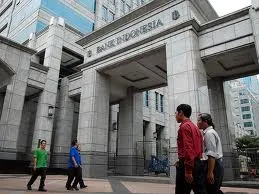
Indonesia imposes higher capital adequacy for some banks
Increased stability of the financial system.
Indonesia’s central bank is seeking this by imposing higher capital adequacy requirements for some commercial banks.
The new rule, coming into force in March 2013, requires banks to maintain a capital adequacy ratio of between 8 and 14 percent depending on their risk profile, from a current flat requirement of 8 percent, Bank Indonesia said in a statement.
“Bank Indonesia is authorised to set higher minimum capital from the range set, in circumstances where Bank Indonesia considers the calculation of minimum capital is not adequate to anticipate risk,” Bank Indonesia said.
Banks with the highest risk profile will need a capital adequacy ratio of between 11 to 14 per cent, while banks with the lowest risk profile will still only need a capital adequacy ratio of 8 per cent. Medium risk profiles require 9-11 per cent.
Indonesia’s larger banks have maintained high levels of Tier 1 capital and proved resilient to global financial troubles, but there are many small rural lenders across the archipelago.
For more.


















 Advertise
Advertise








